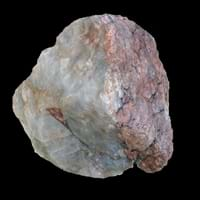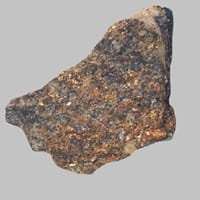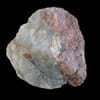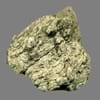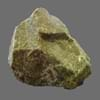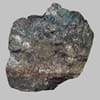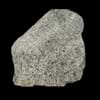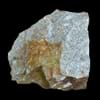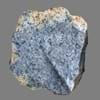Definition
Pegmatite rock is a holocrystalline, intrusive igneous rock which is composed of interlocking phaneritic crystals
Adakite is an intermediate to felsic volcanic rock that has geochemical characteristics of magma which is said to be formed by partial melting of altered basalt that is subducted below volcanic arcs
Origin
Unknown
Adak, Aleutian Islands
Discoverer
R. J. Hauy
Defant and Drummond
Etymology
From Greek pegma, pegmat which means- thing joined together + -ite
From Adak, Aleutian Islands
Class
Igneous Rocks
Igneous Rocks
Sub-Class
Durable Rock, Hard Rock
Durable Rock, Medium Hardness Rock
Other Categories
Coarse Grained Rock, Opaque Rock
Fine Grained Rock, Medium Grained Rock, Opaque Rock
Texture
Pegmatitic
Porphyritic
Color
Black, Brown, Cream, Green, Grey, Pink, Red, Rust, Silver, White, Yellow
Black, Brown, Light to Dark Grey
Durability
Durable
Durable
Appearance
Layered, Banded, Veined and Shiny
Dull and Soft
Interior Uses
Decorative Aggregates, Flooring, Interior Decoration
Decorative Aggregates, Floor Tiles, Homes, Hotels, Kitchens
Exterior Uses
As Building Stone, As Facing Stone, Paving Stone
As Building Stone, As Facing Stone, Office Buildings
Other Architectural Uses
Curbing
Whetstones
Construction Industry
As Dimension Stone, Building houses or walls, Construction Aggregate, for Road Aggregate, Landscaping
As Dimension Stone, Cobblestones, Rail Track Ballast, Roadstone
Medical Industry
Not Yet Used
Not Yet Used
Antiquity Uses
Artifacts, Sculpture, Small Figurines
Monuments, Sculpture, Small Figurines
Commercial Uses
Creating Artwork, Jewelry, Source of corundum, tourmalines, beryls and topaz
Commemorative Tablets, Pottery, Used in aquariums
Types
Granite Pegmatite, Gabbro Pegmatite and Diorite Pegmatite
Not Available
Features
Generally rough to touch, Is one of the oldest rock, Source of corundum, tourmalines, beryls and topaz
Has High structural resistance against erosion and climate, Host rock for Diamond, Very fine grained rock
Archaeological Significance
Monuments
Not Yet Used
Used
Famous Monuments
Not Applicable
Data Not Available
Famous Sculptures
Data Not Available
Data Not Available
Pictographs
Not Used
Used
Petroglyphs
Not Used
Used
Formation
Pegmatite rock is holocrystalline, intrusive igneous rock which is formed by partial melting and dewatering during the process of metamorphism.
Adakite rocks are formed when the hydrous fluids are released from minerals that break down in metamorphosed basalt, and rise into the mantle they initiate partial melting.
Mineral Content
Apatite, Beryl, Feldspar, Fluorite, Garnet, Lepidolite, Quartz, Silica, Spodumene, Topaz
Olivine, Plagioclase, Pyroxene
Compound Content
Aluminium Oxide, CaO, Iron(III) Oxide, FeO, Potassium Oxide, Magnesium Carbonate, MgO, Phosphorus Pentoxide
Aluminium Oxide, MgO, Silicon Dioxide
Types of Metamorphism
Burial Metamorphism, Cataclastic Metamorphism, Contact Metamorphism, Hydrothermal Metamorphism, Impact Metamorphism, Regional Metamorphism
Cataclastic Metamorphism, Contact Metamorphism, Impact Metamorphism, Regional Metamorphism
Types of Weathering
Biological Weathering, Chemical Weathering, Mechanical Weathering
Chemical Weathering, Mechanical Weathering
Types of Erosion
Chemical Erosion, Coastal Erosion, Glacier Erosion, Sea Erosion, Water Erosion, Wind Erosion
Coastal Erosion, Sea Erosion, Water Erosion
Grain Size
Medium to Coarse Grained
Fine to Medium Grained
Fracture
Conchoidal
Conchoidal
Streak
White
Bluish Black
Porosity
Less Porous
Less Porous
Luster
Grainy, Pearly and Vitreous
Grainy, Pearly and Vitreous
Compressive Strength
Not Available
Cleavage
Perfect
Not Available
Toughness
2.1
Not Available
Specific Gravity
2.6-2.63
Not Available
Transparency
Translucent to Opaque
Opaque
Density
2.6-2.65 g/cm3
Not Available
Resistance
Heat Resistant, Impact Resistant, Pressure Resistant
Heat Resistant, Pressure Resistant, Wear Resistant
Deposits in Eastern Continents
Asia
China, India, Iran, Japan, Nepal, North Korea, Russia, Saudi Arabia, South Korea
India, Russia
Africa
South Africa
Ethiopia, Somalia, South Africa
Europe
Austria, France, Greece, Ireland, Italy, Netherlands, Slovakia, Spain, Turkey, Ukraine
Iceland
Others
Not Yet Found
Not Yet Found
Deposits in Western Continents
North America
Canada
Canada, USA
South America
Brazil
Brazil
Deposits in Oceania Continent
Australia
New South Wales, Queensland, South Australia, Western Australia
Not Yet Found
All about Pegmatite and Adakite Properties
Know all about Pegmatite and Adakite properties here. All properties of rocks are important as they define the type of rock and its application. Pegmatite and Adakite belong to Igneous Rocks.Texture of Pegmatite is Pegmatitic whereas that of Adakite is Porphyritic. Pegmatite appears Layered, Banded, Veined and Shiny and Adakite appears Dull and Soft. The luster of Pegmatite and Adakite is grainy, pearly and vitreous. Pegmatite is available in black, brown, cream, green, grey, pink, red, rust, silver, white, yellow colors whereas Adakite is available in black, brown, light to dark grey colors. The commercial uses of Pegmatite are creating artwork, jewelry, source of corundum, tourmalines, beryls and topaz and that of Adakite are commemorative tablets, pottery, used in aquariums.
